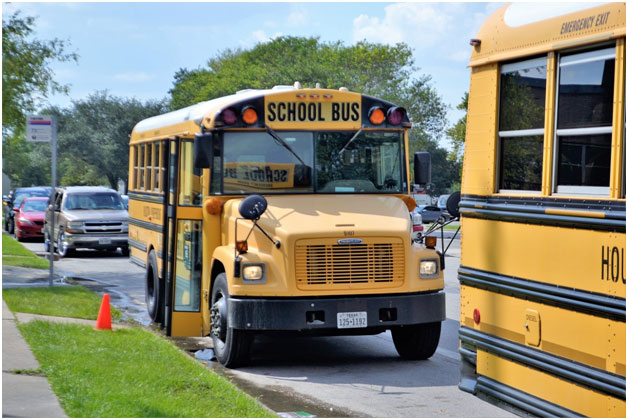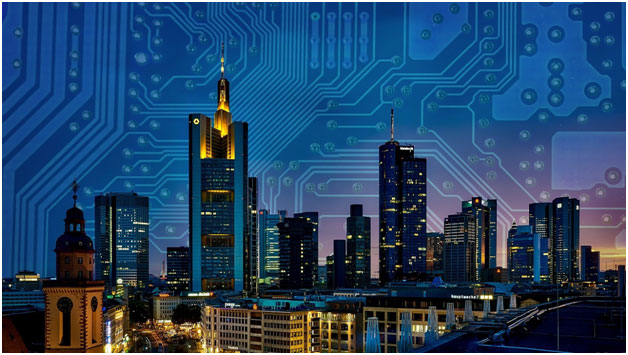As urban planning undergoes rapid evolution, smart cities have emerged, garnering significant attention for their utilization of technology. The cutting-edge smart city framework unifies various domains (such as transportation, energy, healthcare, and waste management) under a single system that uses data-driven solutions. Another consideration for urban planners is that school bus transportation affects students' access to education and the sense of community and socialization that comes from the bus ride itself.
There is a diversity of benefits, challenges, and strategies accompanying such a move toward unifying urban planning with school transportation in the smart city era.

Image by F. Muhammad from Pixabay
The challenges of integrating school bus transportation systems into smart cities
As we consider integrating school bus transportation with smart cities, it becomes clear that this initiative has several inherent challenges that need addressing. The most prominent include substantial cost implications, poor technology adaptation, potential security risks emanating from data collection & analysis, and deciding on policy and regulatory aspects.
These challenges are instrumental in determining whether seamless compatibility and smoother implementation will be achievable.
Cost challenges: Heavy initial investments are required when adopting smart city technologies into existing transport modes. Because of the widely varying needs of each school district, there is no best practice guide regarding initial investment and upgrade paths for integrating smart city technology. An overarching strategy will be needed, followed by proof-of-concept, before creating a budget.
Poor technology adaptation: Implementing new technology comes with obstacles concerning careful planning processes ranging from project planning installation, quality checking installations, policies, and procedures for maintaining the latest technology, and training users, which need to be carefully thought through to be successful.
Data collection and privacy dangers: While most smart city technologies only gather data on infrastructure conditions and the movement of large groups of people, cities need to be aware and transparent if these technologies collect students' private data and, if so, how they handle and protect student data. Public/Private partnerships may also raise concerns about the crossflow of private data.
Smart cities use large amounts of data, and Internet-of-Things (IoT) devices to collect data. IoT devices are particularly vulnerable to cyberattacks, and the degree to which school bus systems interact with these IoT devices is a consideration.
Creating and implementing policy: Integrating school bus transportation into smart cities involves coordination among different entities, including school districts, city governments, transportation authorities, technology providers, and affected regulatory agencies. This integration can be a complicated process requiring cohesive communication within these diverse entities' players regarding the policies, standards, and regulations necessary for successful integration.
The benefits of integrating school bus transportation with smart cities
Integrating school bus transport into smart city ecosystems presents multiple benefits for students and the community, further enhancing urban sustainability efforts, betterment of public health, and increasing cost efficiency.
Reduced traffic congestion: Implementing strategies such as superfluous route elimination, student load balancing, and dynamic routing changes to avoid traffic and construction areas will shorten aggregate travel times, not only for students but also for commuters.
Improve air quality and environmental benefits:Transportation operators can effectively manage their fleets by installing GPS tracking tools integrated with sensors throughout the bus cabin. Shortening routes, reducing idle times, and monitoring speed and driving habits will effectively reduce emissions and improve air quality. Increasing sustainability in cities is paramount to better living conditions for all.
Increased safety for students and the community: Implementing advanced technologies involving live tracking with cameras installed on board or even collision avoidance systems enhance student safety during their commute providing peace of mind to guardians about their children's safety. Utilizing tools like real-time tracking systems, emergency response integration, and intelligent driver monitoring all add up to a higher level of protection for students and commuters.
Increased cost-effectiveness for school districts: Integrating with the smart cities platform results in optimized resource allocation, achieving significant cost savings. The surplus funds can be applied to other educational uses by reducing the cost per student rider.
A case study on school buses in an intelligent transportation system (Leventhal, Wang, Zhao, 2017) touts that multiple strategies could save millions of dollars over existing school bus systems. The study states that numerous complex factors affect the efficiency of existing systems.
The study identifies explicitly advanced hardware such as superfluous route elimination, GPS tracking, RFID-based student tracking systems, and protective sensor technology in their cost analysis. The calculated expenses for implementing these measures are anticipated to be approximately $1 billion initially, followed by annual spending of roughly $250 million nationally.
Finally, the future is the smart city. As computation power progresses along with the analytics needed to run it, how successfully we fold school bus transportation into various domains will affect the livability of our city spaces and students' education for years to come.
Resources
- Smart Cities and Urban Planning : https://www.smartcitiesdive.com/ This website publishes articles about different aspects of smart cities, including technology and urban planning. It would be a great source of authority for explaining the concept of smart cities and their role in urban planning.
- Challenges and Benefits of Smart Cities : https://www.nist.gov/programs-projects/smart-cities-and-communities This is a page from the National Institute of Standards and Technology (NIST), an agency of the U.S. Department of Commerce. It provides in-depth information about the benefits and challenges of creating smart cities.
- School Bus Transportation System and its Role : https://www.ed.gov/news/press-releases/us-department-education-releases-new-transportation-guide-help-districts-address-potential-equity-gaps This webpage from the U.S. Department of Education provides insights into the role of school bus transportation in education. It could lend credibility to your content on the topic of school bus transportation and education.
- Internet of Things (IoT) and Cybersecurity : https://www.csoonline.com/article/3220476/what-is-iot-the-internet-of-things-explained.html This page from CSO Online explains what IoT is and its potential security issues. This link could enhance the trustworthiness of your content when discussing the technological and cybersecurity aspects of smart cities.
- Case Studies on Intelligent Transportation Systems : https://www.its.dot.gov/research_archives/casestudy/ The U.S. Department of Transportation provides numerous case studies on intelligent transportation systems. It could be an authoritative source to back up your arguments on the practical applications of integrating school bus transport into smart city ecosystems.




